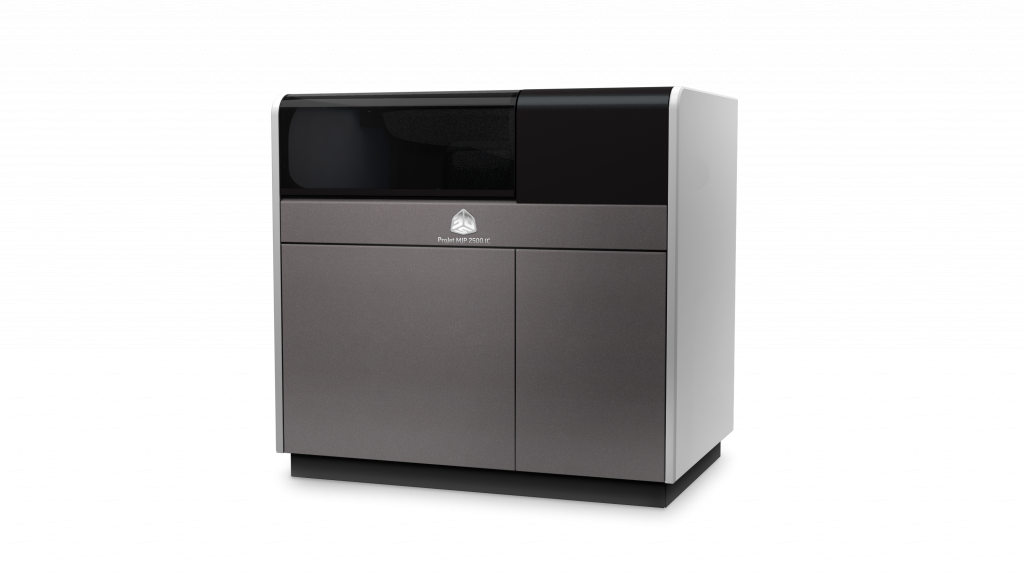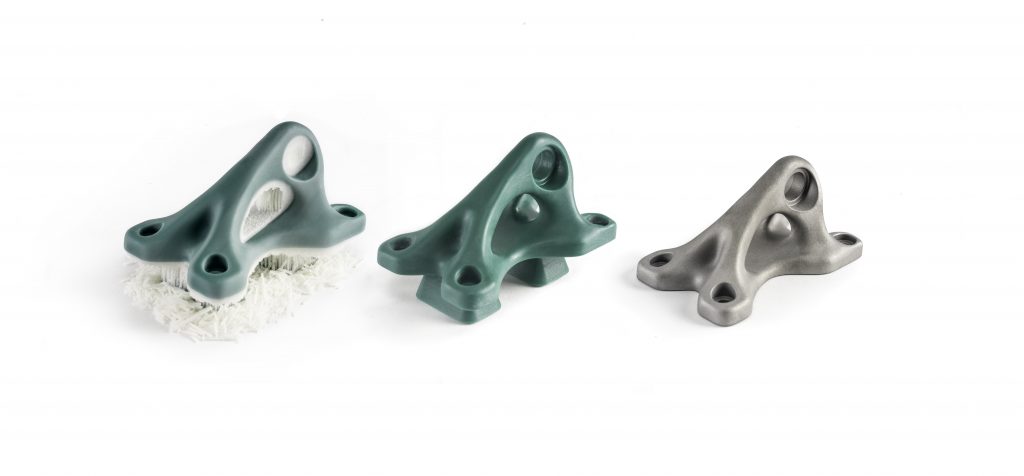3D Systems today announced the release of the ProJet MJP 2500 IC RealWax. This 3D printer is a digital foundry solution which lets existing investment casting operators switch to 3D printing for their patterns using MJP 3D printing. 3D Systems has implemented an entire investment casting solution along with the system including materials, machines, and software. By integrating software more workflows can also be automated and parts can be optimized. Injection molded tools are also not needed anymore. Overall 3D printing patterns should speed up the casting process. Traditional investment casting patterns are often laborious and require several manufacturing steps. 3D printing can reduce the number of steps taken to make a pattern and the overall cost. By using VisiJet M2 ICast the steps foundries have to take to adopt 3D printing are also comparatively facile. The VisiJet material is wax so it will work within the existing foundry and no updates and changes to furnaces or temperatures are needed to handle the material.

In commissioned research for one part, “cost comparison analysis conducted by Mueller Additive Manufacturing Solutions, a pattern tool for a mechanical cam cost $6,050 while the 3D printed equivalent pattern cost less than $25 – with the only lead time being the short time to print the pattern.”
Such calculations would be geometry and part size dependent of course but in general, we can say that by switching to 3D printing cost and time savings should be considerable.
Al Hinchey, 3D print manager, Invest Cast, Inc. stated that,
“We are able to produce parts that were previously not able to be produced using traditional wax injection molding. Additionally, the part quality, surface finish and accuracy have allowed us to move more of our production to this product. Finally, the complexity of parts that we can now produce has enabled new functionality that we can offer our customers,”
3DPrint.com interviewed Mike Stanicek, Vice President, Product Management, Plastics, 3D Systems to find out more about this development.
If I’m a traditional investment casting company unfamiliar with 3D Printing what would I need to learn and what equipment would I need to implement this?
“The beauty of the ProJet MJP 2500 IC 3D printing solution is that it 3D prints patterns using wax. That means a typical foundry will have the experience and skills necessary to quickly adopt the workflow associated with the 2500 IC and transform their foundry. There is no need for the operator to learn new processes for building patterns onto trees, investing those patterns, melting out the wax or preheating of the investments. The printer is plug-and-play, and as one of our beta customers said “it was unboxed, set-up and printing in 5 hours.” The ProJet MJP 2500 IC comes installed with 3D Sprint™ software which simplifies the steps of turning geometry into a pattern that can be printed on the 2500 IC without the need for an expensive 3D print preparation program. Finally, simple post-processing removes the support material that was generated during the printing process. 3D Systems provides detailed instructions regarding the steps and equipment to successfully carry out this process step. The operator can easily remove the majority of the support wax and then place the pattern in a heated IPA bath for about 30 minutes. After that, it is ready to be used to develop the casting shells.”
How can it decrease the cast parts weight?
“Design for additive techniques enable the optimization of a part in CAD so it is much lighter weight but would typically be regarded as ‘unmoldable’ using traditional pattern production. 3D printed casting patterns, however, can deliver that design optimization into the investment casting workflow because they are built layer by layer using the additive process. This gives flexibility to reduce the amount of material used while improving strength-to-weight ratios and makes these kinds of designs viable for casting.”
How will this let me save costs?
The ProJet MJP 2500 IC creates patterns in a fraction of the time and cost compared to
traditional pattern production.
- By 3D printing the patterns, the time needed to design and fabricate a mold is
eliminated. The traditional process typically takes weeks to accomplish. With the
ProJet 2500 IC, first part can be achieved in hours or days.- The designer can try multiple design iterations without having to incur the expense
of time and money to make each mold. This allows almost real-time design iteration.- Finally, the foundry does not need to account for tool storage. When a customer uses
traditional molds, they must be stored until they are used again which necessitates
an additional cost the foundry must incur. In a digital foundry, the mold is a digital
file stored in a server room without maintenance, storage, or human capital cost.

Will this speed up my investment casting process?
“Yes, by removing the time to design and manufacture a mold, a foundry can reduce time to
first part by several weeks. This is a significant competitive advantage. For the foundry, this
can also help generate additional revenue as a premium, quick-turn service for customers.”
What post processing does the 3D Printed part need?
“With the ProJet MJP 2500 IC, post-processing is quite simple. Typical post-processing includes a manual “de-bulking” of the support wax which requires minimal effort as the wax is designed to be removed easily. Once that is complete, the wax pattern is soaked in a
heated IPA bath to remove any remaining support wax. The time in the bath is geometry-dependent but for most patterns, it will take 30 minutes or less.”
Will this change buy to fly ratios for me?
“The ProJet MJP 2500 IC is already changing the way foundries operate, dramatically speeding time to first part and reducing overall total cost of operation (TCO). 3D Systems has developed a TCO model which shows the impact and breakeven analysis of typical wax pattern parts. While each part is different, the basic rule of thumb is 300 parts using 3 cubic inches of material or less will be cheaper to print than mold. In addition, by shaving weeks off the time to first part, additional savings result by achieving the first part faster without the expense and time required to build a traditional mold. A digital workflow enables foundries to achieve higher quality parts, and faster time to market while exploring.”
Subscribe to Our Email Newsletter
Stay up-to-date on all the latest news from the 3D printing industry and receive information and offers from third party vendors.
Print Services
Upload your 3D Models and get them printed quickly and efficiently.
You May Also Like
The Market and Industry Potential of Multi-Material 3D and 4D Printing in Additive Electronics
Additive manufacturing leverages computer-based software to create components for products by depositing either dielectric or conductive materials, layer by layer, into different geometric shapes. Since its birth in the 1980s,...
3DPOD 262: Bio-inspired Design for AM with Dhruv Bhate, Arizona State University
Dhruv Bhate is an associate professor at Arizona State University. There, he looks at structures, materials, and design. Previously, he worked at PADT as well as in the semiconductor and...
3DPOD 261: Tooling and Cooling for AM with Jason Murphy, NXC MFG
Jason Murphy´s NXC MFG (Next Chapter Manufacturing) is not a generalist service; instead, the company specializes in making tooling. Using LPBF and binder jet, the company produces some of the...
3DPOD 260: John Hart on VulcanForms, MIT, Desktop Metal and More
John Hart is a Professor at MIT; he´s also the director of the Laboratory for Manufacturing and Productivity as well as the director of the Center for Advanced Production Technologies....
































